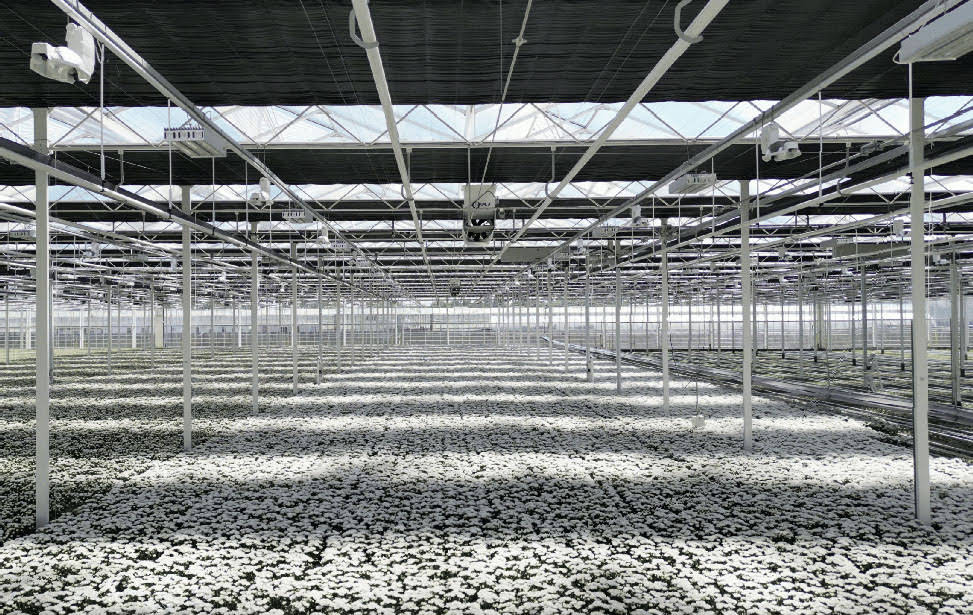- English

The use of the latest types of climate screens can result in an additional 10 percent energy saving, practical experience shows. With innovative adjustments to our existing products, achieving even higher energy efficiency is now possible. We will, of course, be present at Greentech 2023 (booth: 01.418) to explain the possibilities.
Through continuous research and innovation, Ridder manages to constantly raise the bar for energy saving. “More and more growers are considering double screens or cloths with an aluminium top layer to save energy. At the same time, they strive to maintain an optimal greenhouse climate, so that their crops remain healthy and productive,” notes Johan van Erven, Product Specialist at Ridder.
Ridder responded to this desire with a modification in the manufacturing of the RES 10+ FR screen cloth. Van Erven explains: “We are now using our own advanced knitting machines in Maasdijk for the RES 10+ FR screen cloth. The application of this modern technology allows us to improve the production process and quality even further.
What makes our energy-saving RES 10+ FR screen cloth unique is the production with a 5 mm ribbon – the only one in the sector – in contrast to the standard 4 mm ribbon. This results in a reduced amount of yarn in the cloth, reducing moisture removal and increasing energy savings. In addition, our advanced knitting techniques allow us to knit the cloth even tighter. According to NEN 2675 measurements, our cloth also lets through 7.1% more light than a comparable clear cloth with a 4 mm ribbon.
Aluminium top layer
A blackout cloth with a fire-resistant aluminium top layer is another screen cloth that results in higher energy savings and maintains the greenhouse temperature better during summer. For this reason, Ridder launched the RBO 100 FR AB+B cloth, responding to the wishes of some customers. This modification is designed to increase the desired energy savings and simultaneously regulate the temperature in the greenhouse.
Chrysanthemum nursery Linflowers in the Bommelerwaard, equipped their new greenhouse in 2022 with this cloth and have already experienced its benefits. David van Tuijl from Linflowers explains: “We were looking for a cloth that combines fire resistance with an aluminium top layer. Ridder turned out to be the right partner who could provide this innovative solution.”
The advantage of the aluminium top layer is its ability to reflect sunlight. On sunny days, this layer reflects the intense sunlight, keeping the temperature in the greenhouse manageable. However, the cloth is also valuable in the winter, as aluminium reflects sunlight more effectively than a white cloth. This results in a cooler environment in the summer and the retention of more heat in the winter.
This combination of properties has resulted in an energy saving of approximately 10 percent compared to Linflowers’ other locations. Johan van Erven from Ridder adds: “When the screen is closed, this cloth reflects the cold radiation. Without this function, the leaf temperature can drop significantly compared to the ambient temperature, which can lead to cell breakage.”
Bromelia grower LKP Plants in Moerkapelle was one of the other growers who expressed the desire for a fire-retardant aluminium screen cloth to Ridder. Cultivation Director Marco Koolhaas shares: “In 2021, we installed three new cloths in an existing greenhouse. The top one is the open cloth with the reflective aluminium top layer. Below this are two dense screens for energy saving.”
This specific combination was chosen with optimal climate conditions in mind. “The reflection of the cold radiation in the winter ensures that the dense cloths underneath become less cold. This leads to less condensation, which helps to keep the crops at temperature and the cloths clean and effective for longer,” Koolhaas explains.
Replacement is Worthwhile
According to Van Erven, it is wise for growers to think about timely replacement of their energy screens. “Don’t just look at age, but also at dust contamination. Replacing your screen cloth every five years can result in extra light and a saving of 2 to 3 cubic meters of natural gas per square meter.” Read about it in our blog: “Why you should replace your energy screens on time“.
Interested in the possibilities of energy saving while maintaining an optimal greenhouse climate? Come and visit us at GreenTech in the RAI in Amsterdam from June 13 to 15, 2023, booth number 01.418.